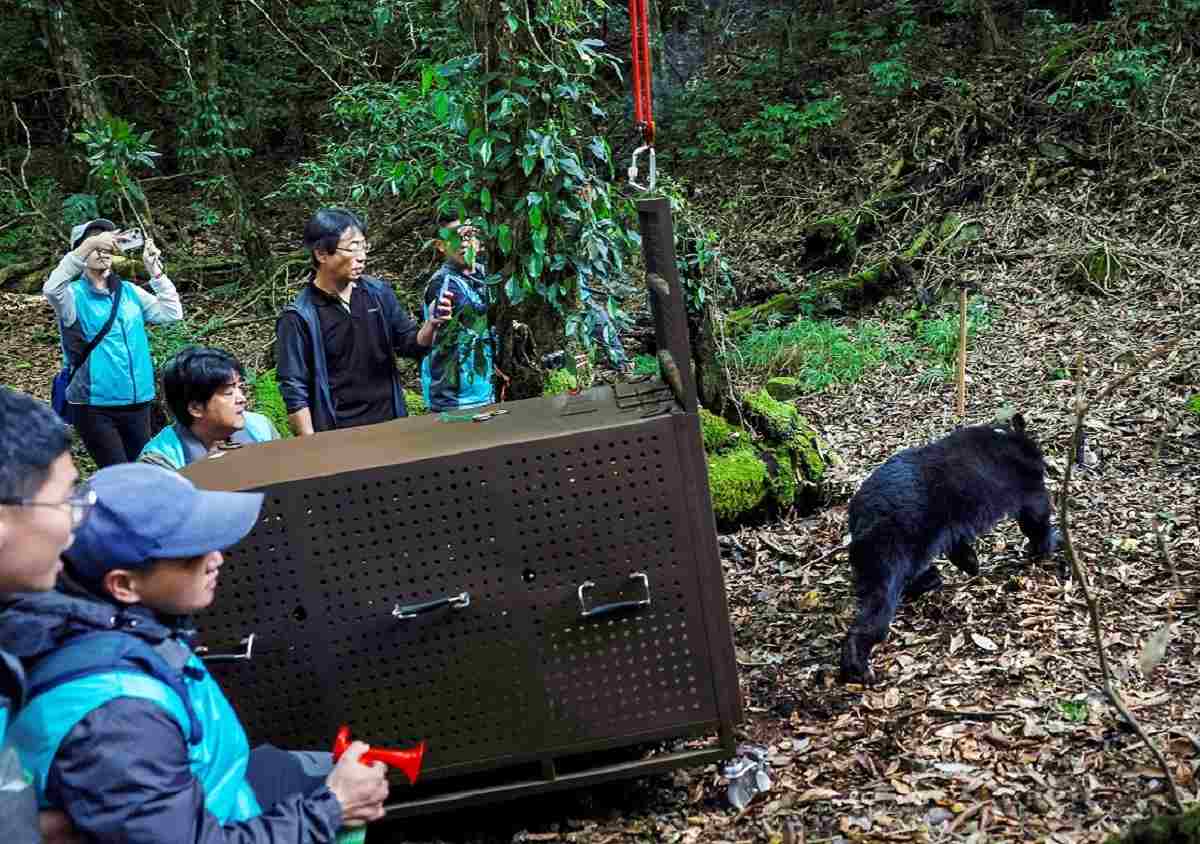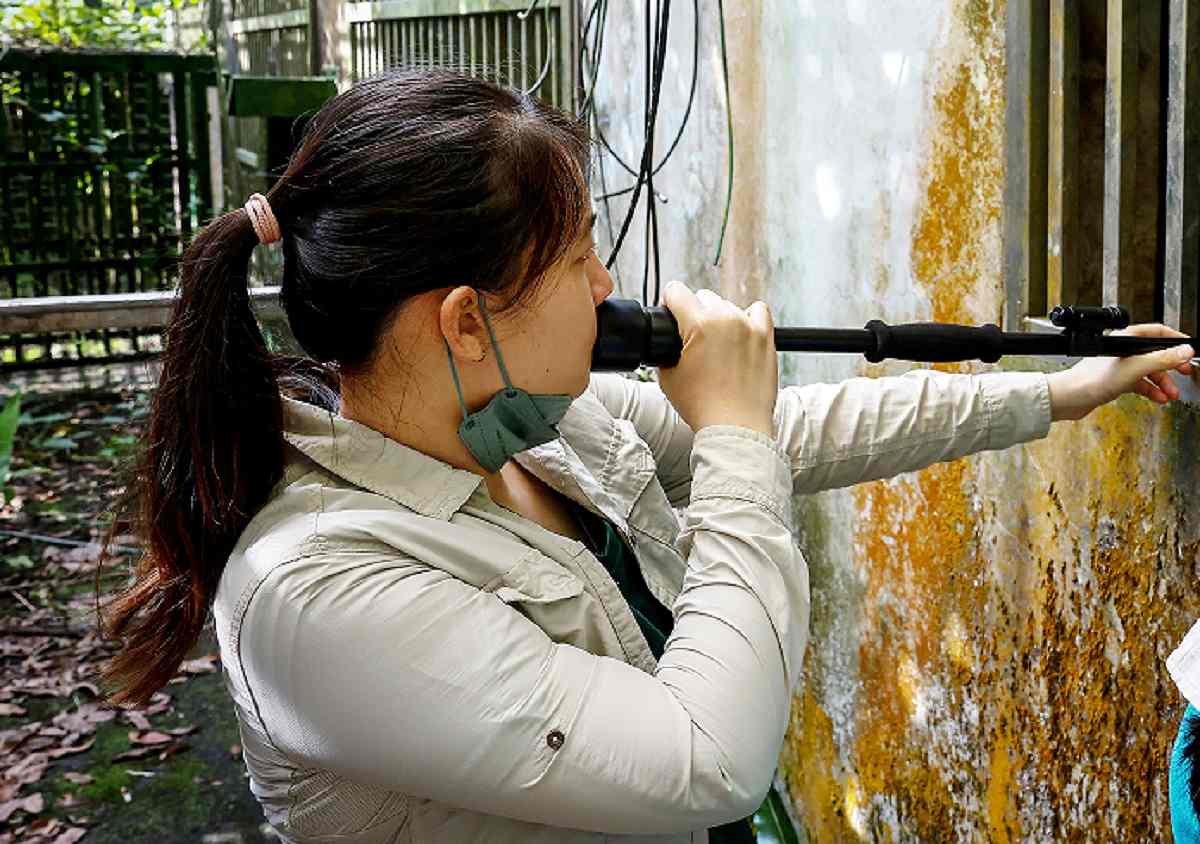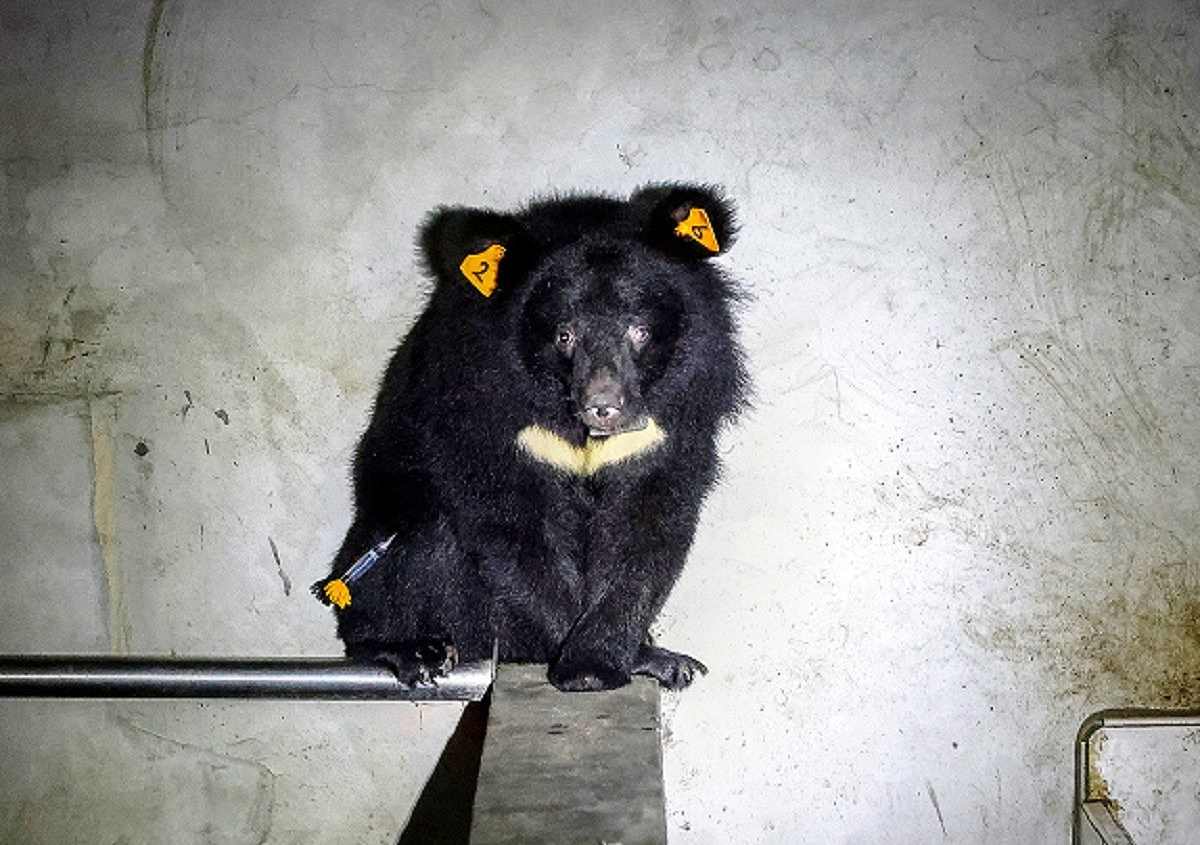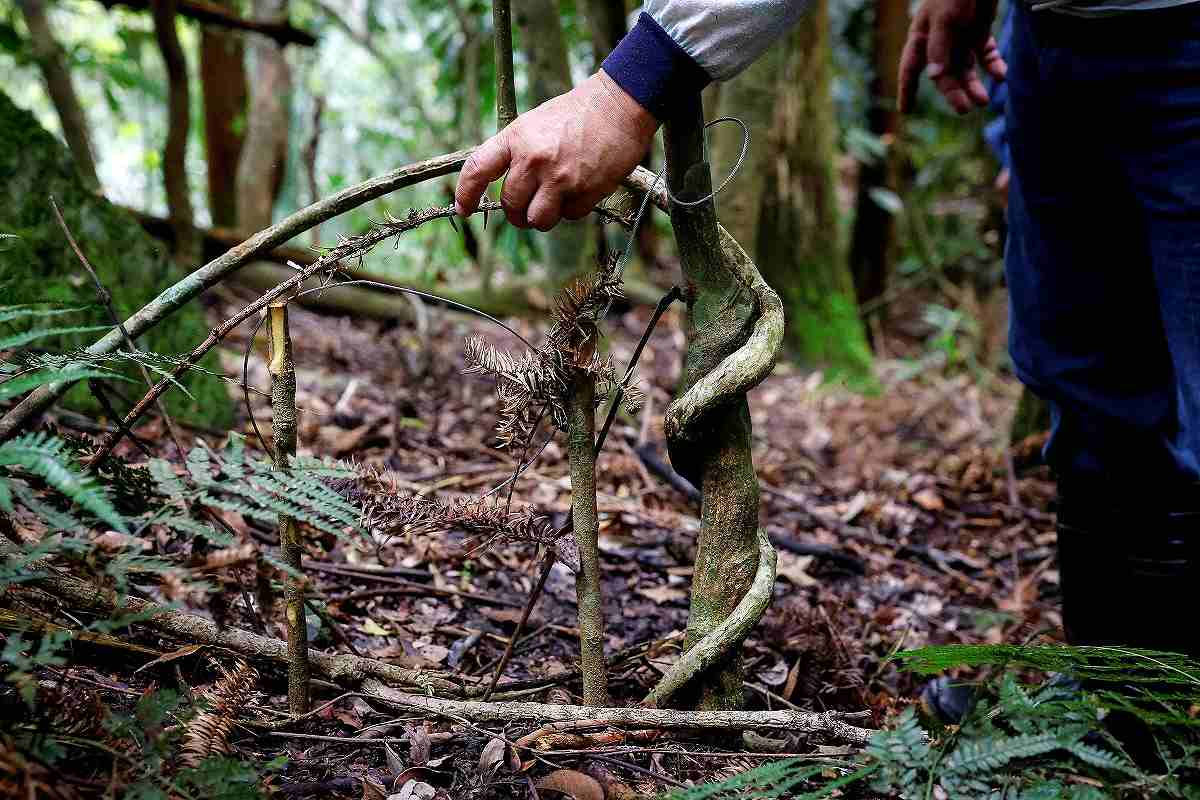
Ziman, a rescued Formosan black bear, runs out of a cage on the day of his release, after he recovered from the amputation of a paw, in Taichung, Taiwan, on May 16.
12:10 JST, September 12, 2024
TAICHUNG, Taiwan (Reuters) — As the cage holding an endangered Formosan black bear swung open, conservationists blasted gunshots and air horns to ensure the frightened young bear disappeared quickly into the mountains of central Taiwan, hopefully far from human contact.
Ziman, a one-and-a-half-year-old bear, had finally recovered from the amputation of a paw caused by a hunter’s steel noose and now had a second chance in life.
“Please take care of him and help him find his parents safely,” Pihao Payen, the leader of a nearby ethnic Atayal community, said in a prayer as Ziman disappeared from sight.
Wearing a traditional tribal tunic and headgear decorated with animal horns, the 74-year-old chief and experienced hunter also prayed for his ancestors’ help to keep Ziman away from traps.
Taiwanese hunters and conservationists are teaming up to protect the Formosan black bear, with only a few hundred estimated still in the wild, by designing new traps which will not amputate limbs if they are accidentally caught in a snare.
While bears are not a target for indigenous Taiwanese hunters, people in Pihao Payen’s village have accidentally caught bears twice in recent years when laying traps for prey such as deer and boars, a traditional practice in indigenous culture.
Since 2014, 18 bears have been captured in traps, with six found dead, according to the non-governmental organization the Taiwan Black Bear Conservation Association.
While most of the bears were released, some suffered major injuries caused by old-fashioned hunting tools such as metal snares, which can break bones or sever paws or toes as the bear struggles to break free.
“Steel snares bounce off the ground and tighten up when triggered by animals,” said Liu Li-wen, an animal caretaker who oversaw Ziman’s recovery in a government-run bear shelter in the mountains of Taichung.
“The snares turned tighter and tighter as the animal struggled. When blood circulation stopped, his entire paw turned necrotic,” she said, showing pictures of Ziman’s swollen left paw. Vets had to cut most of the paw off to save the cub’s life after two months of treatment.
“That’s why we are seeing many bears with broken paws or toes in the wild. It’s likely that they were entangled by traps, broke free by themselves and survived,” she said.


Let: A vet blows a tranquilizer at Ziman, ahead of preparations for his release the following day on May 15. Right: Ziman stands in a room after being hit with a tranquilizer dart.
New snares
The Formosan black bear is one of seven subspecies of Asiatic black bear which are considered vulnerable to extinction by the International Union for Conservation of Nature.
Indigenous to sub-tropical Taiwan with an iconic V-shaped white mark on the chest, the Formosan black bear is seen as a symbol of Taiwanese identity that represents its diverse culture and freedom. Democratic Taiwan was previously better known internationally as Formosa.
To reduce death or injuries of wildlife, the Forestry and Nature Conservation Agency is now urging hunters and farmers to adopt a new type of animal snare designed to only trap smaller prey and which does not tighten to the point of amputation.
More than 5,600 such traps have been given to hunters and farmers for free across mountainous Taiwan, which is 60% covered by forest, while monetary rewards are given to those who report cases of bears caught by traps.

A local aboriginal hunter demonstrates to Reuters reporters how to set up traditional traps using materials found in the forest on July 11.
“Because of its small size, and because the bear’s palm is very wide, you see that it [the bear paw] will not fall in completely when stepped on like this,” explained Pan Wen-ming, an ethnic Amis hunter and guava farmer in central Taiwan, as he demonstrated how to set up the new trap to Reuters reporters.
“It tries to minimize [bear injuries] while letting the elders and hunters of our tribe still hunt for prey,” he said.
Chen Yen-long, chief of the Wushikeng Research Centre bear shelter in Taichung, said some hunters killed snared bears for fear of being prosecuted for trapping a protected animal.
Sadly, Ziman, the cub with the amputated paw, was found dead in the central mountains only weeks after his release, with authorities unable to determine cause of death.
“This is not the end of the story. We will not stop what we are doing,” said Lai Chiao Ling, one of Ziman’s caretakers. “At least there are still bears in the wild for us to save.”
"Science & Nature" POPULAR ARTICLE
-

Mass Oyster Die-Offs Confirmed in Japan’s Seto Inland Sea; High Water Temperature Cited as Primary Cause
-

Genome Study Reveals Milestone in History of Cat Domestication
-

Big Leap in Quest to Get to Bottom of Climate Ice Mystery
-

Security Camera Footage Vulnerable to Outside Access; Investigation Finds 3,000 Pieces Exposed Online
-

Paws on Parade: Nairobi’s Dogs Dazzle at ‘Pawchella’
JN ACCESS RANKING
-

Keidanren Chairman Yoshinobu Tsutsui Visits Kashiwazaki-Kariwa Nuclear Power Plant; Inspects New Emergency Safety System
-

Imports of Rare Earths from China Facing Delays, May Be Caused by Deterioration of Japan-China Relations
-

University of Tokyo Professor Discusses Japanese Economic Security in Interview Ahead of Forum
-

Japan Pulls out of Vietnam Nuclear Project, Complicating Hanoi’s Power Plans
-

Govt Aims to Expand NISA Program Lineup, Abolish Age Restriction


























